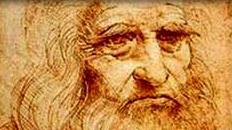About Leonardo da Vinci

Leonardo da Vinci (1452-1519) was a remarkable man born on the cusp of the Renaissance when culture and science flowered in Europe after religious dogma had dominated learning during the Middle Ages. The relative freedom of the age encouraged wealthy and educated men and women to observe natural phenomena and question traditions to increase their understanding of the world.
After serving a ten-year apprenticeship under Andrea del Verrocchio, the leading artist in Florence, Italy, da Vinci’s father set him up as a master artist with his own workshop in 1776. Da Vinci became famous as an artist in his own lifetime, and his enduring legacy has been sustained by fewer than twenty-three surviving paintings including Mona Lisa and The Last Supper.
Further to his artistic achievements, da Vinci’s career spanned appointments as a military tactician, engineer and designer fulfilling the domestic aspirations and territorial ambitions of the rich and powerful of Europe. From giant mechanical lions to parade floats, war machines and city fortifications to water supplies, da Vinci was in demand for technical and logistical advice.
The 1,119 pages of Codex Atlanticus, assembled in the late 1500s from da Vinci’s papers dated between 1464 and 1519, reveal the breadth of his engineering imagination. His drawings and descriptions range through gears, ball bearings, screws, levers, pulleys, pivots and missile trajectories to clockwork cars, steam guns, clocks, bridges, canal locks, boats, flying machines, helicopters, printing presses, hygrometers, anemometers, parachutes, wire testers, gears and hydraulics.
